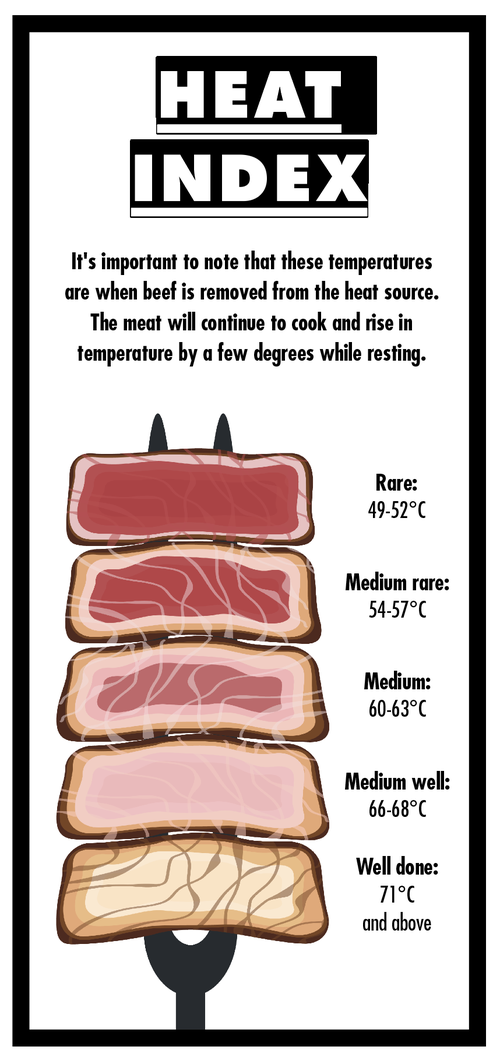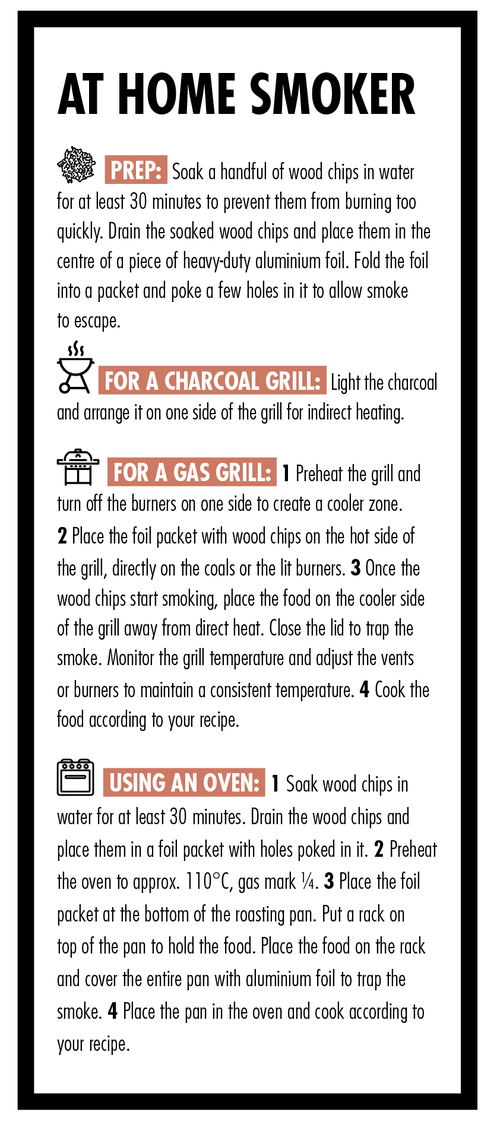SALT
Salt is a crucial ingredient for enhancing the natural flavour of meat. Here are a few more ways to elevate your grilling game by using salt:
Brining: This is a simple yet effective technique which involves soaking the meat in a solution of salt and water before cooking. This helps tenderise the meat and enhances its natural flavours. For example, brine chicken pieces in a mixture of water, salt, sugar and spices for several hours before smoking or grilling.
Salt Finishing: Just before serving, sprinkle a pinch of salt over the cooked meat. This final touch helps elevate the flavours and provides a burst of seasoning.
Salted Butter Basting: While grilling or smoking, baste the meat with a mixture of melted butter and salt. This adds richness and a savoury flavour to the meat while also keeping it moist.

FAT
Different fats can be used in various ways to enhance the flavour and texture of meat. Here are some ways you can use different fats at your barbecue:
Marinades and Brines: Fats such as olive oil, vegetable oil, or melted butter can be included in marinades and brines to tenderise the meat and infuse it with flavour. For example, you can marinate chicken in a mixture of olive oil, lemon juice, herbs and spices before grilling.
Basting: During cooking, basting with fat helps to keep the meat moist and impart flavour. You can baste meats with melted butter, fat, or a mixture of oil and herbs. Basting can be done using a brush or by spooning the fat over the meat periodically during cooking.
Injecting: Larger cuts of meat such as shoulder or brisket can be injected with a mixture of fat and seasonings to add moisture and flavour deep into the cut. This technique is useful for lean cuts that tend to dry out while they’re cooking.
Smoking: When smoking meat, the type of wood you use can also impart a variety of flavours. Some woods, such as hickory or mesquite, produce a stronger smoke flavour, while others, like fruit woods (apple, cherry), impart a milder, sweeter flavour. The smoke from these woods interact with rendering fat to create a more complex flavour profile.
Finishing: Just before serving, you can add a pat of flavoured butter or drizzle some infused oil over the cooked meat to add a final burst of flavour. Compound butters, made by mixing herbs, spices and other flavourings into softened butter, are particularly delicious when melted over grilled steak or chicken.
Fat Cap: For certain cuts of meat, such as shoulder or brisket, leaving a layer of fat on the surface can help baste the meat as it cooks, keeping it moist and adding flavour. This fat cap can be scored to help it render and melt into the meat during the cooking process, while also creating a caramelised, crispy exterior.
ACID
Acidic ingredients can add brightness and a depth of flavour to meats.
Marinades: Acidic ingredients such as citrus juice (lemon, lime, or orange) or vinegar (apple cider vinegar, white vinegar, balsamic vinegar) can be used in marinades to tenderise the meat and increase flavour. Combine these acids with oil, herbs, spices and other seasonings to create a flavourful marinade for your meat.
Brines: Similar to marinades, acidic ingredients can be included in brines to tenderise and flavour the meat. For example, you can brine poultry in a mixture of water, salt, sugar and lemon juice or apple cider vinegar before grilling or smoking.
Sauces and Glazes: Acidic ingredients are often used in barbecue sauces and glazes to balance out sweetness and richness. Tomato-based sauces typically contain vinegar or citrus juice to provide acidity and brightness. You can also add a splash of vinegar or citrus juice to home-made barbecue sauces or glazes to enhance their flavour.
Finishing Touches: Just before serving, a squeeze of lemon or lime juice over grilled or smoked meat can add a fresh, acidic contrast to its rich, smoky flavours. You can also sprinkle chopped fresh herbs, such as parsley or cilantro, which have natural acidity, over the meat for added brightness.
Accompaniments: Acidic sides, such as coleslaw tossed in vinegar-based dressing or pickled vegetables, can complement the flavours of barbecue meats. The acidity helps cut through the richness of the meat and provides a refreshing contrast.

HEAT
Heat, spice and cooking methods play essential roles in bringing out the flavours of meat in all barbecue.
Dry Rubs and Spice Blends:
Dry rubs are mixtures of spices and seasonings that are rubbed onto the surface of the meat before cooking. These blends can contain a variety of ingredients such as chilli powder, cayenne pepper, paprika, garlic powder, onion powder, cumin and brown sugar, among others. The heat and spices in the rub not only add flavour but also caramelise on the grill to create a flavourful crust on the meat.
Marinades: Marinades are liquid mixtures that meat is soaked in before cooking to tenderise and flavour it. Spices, herbs and other flavourings can be added to the marinade to enhance the taste of the meat. Additionally, ingredients such as hot sauce or chilli peppers can provide heat and spice to the marinade, infusing the meat with bold flavours.
Smoking: Smoking is a traditional cooking method in barbecue that uses low, indirect heat and wood smoke to cook the meat over a long period. The type of wood used will dictate the flavour you want to achieve. The slow smoking process allows the meat to absorb smoky flavours while becoming tender and juicy.
Grilling: Grilling over an open flame or hot coals is another popular cooking method in American barbecue. Direct grilling exposes the meat to high heat, creating caramelisation and Maillard reactions that enhance its flavour. You can add heat and spice to grilled meat by using spicy marinades or by basting it with a spicy barbecue sauce during cooking.
Spicy Sauces and Condiments: Barbecue sauces and condiments can be made with spicy ingredients such as hot peppers, chilli powder, or hot sauce to add heat and flavour to the meat. These sauces can be brushed onto the meat during cooking or served on the side for dipping or drizzling.
Pepper Crust: For certain cuts of meat, such as beef brisket or steak, you can create a pepper crust by generously seasoning the meat with cracked black pepper before cooking. The heat from the pepper enhances the flavour of the meat as it cooks.

